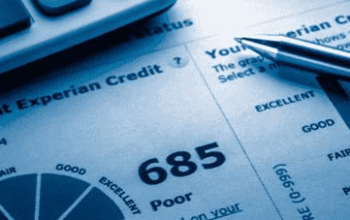Debt can feel overwhelming, especially for Canadians facing financial hardships. Whether due to unforeseen expenses, job loss, or mounting bills, it’s essential to understand the various debt relief options available. This guide aims to provide clarity and direction for Canadians seeking to regain control of their financial futures.
Understanding Debt in Canada
As of late 2023, Statistics Canada reported that household debt reached approximately $2.6 trillion. This staggering figure highlights the importance of effective debt advice in Canada. Understanding your situation is the first step toward managing your debt effectively. Before exploring relief options, evaluate your financial health by taking the following steps:
- List Your Debts: Write down all your debts, including credit cards, loans, and any other obligations. Note the interest rates and minimum payments for each.
- Assess Your Income: Calculate your total monthly income and compare it to your monthly expenses. This will help you identify how much surplus income you have for debt repayment.
- Identify Financial Goals: Set clear and achievable financial goals. Determine whether you want to pay off debts quickly or consolidate them for lower monthly payments.
Debt Relief Options
Canada offers a variety of debt relief options, each with its own benefits and drawbacks. Here are some of the most common methods:
1. Debt Consolidation Loans
Debt consolidation involves taking out a new loan to pay off multiple existing debts. This option can simplify your finances by combining multiple payments into one and potentially securing a lower interest rate.
Pros:
- Easier to manage one monthly payment.
- Possible reduction in overall interest rates.
Cons:
- Requires good credit to qualify for lower interest rates.
- Risks falling back into debt if spending habits don’t change.
2. Credit Counselling
Credit counselling involves working with a certified professional to create a personalized plan for managing your debts. Non-profit credit counselling agencies in Canada can provide valuable resources and advice.
Pros:
- Access to budgeting tools and resources.
- Professional guidance tailored to your financial situation.
Cons:
- Some agencies may charge fees for their services.
- The effectiveness depends on your commitment to the plan.
3. Debt Management Plans (DMPs)
A DMP is a structured repayment plan facilitated by a credit counselling agency. It allows you to make a single monthly payment to the agency, which then distributes the funds to your creditors.
Pros:
- Reduced interest rates and fees.
- No need to negotiate directly with creditors.
Cons:
- May require a long-term commitment (typically three to five years).
- Could affect your credit score if you stop making payments.
4. Consumer Proposals
A consumer proposal is a legally binding agreement between you and your creditors to pay a portion of your debts over a specified period, usually up to five years. This option is available through a licensed insolvency trustee.
Pros:
- Reduces total debt owed (up to 70% in some cases).
- Stops interest from accruing and prevents collection actions.
Cons:
- It remains on your credit report for three years after completion.
- Requires a consistent income to make the agreed payments.
5. Bankruptcy
As a last resort, bankruptcy can provide relief from overwhelming debt. This legal process involves the liquidation of assets to pay creditors.
Pros:
- Provides a fresh start by discharging most unsecured debts.
- Protects you from creditor harassment.
Cons:
- Significant impact on your credit score (remains for six to seven years).
- Potential loss of assets, including your home or vehicle.
Steps to Take When Seeking Debt Relief
If you are struggling with debt, consider the following steps:
- Research Your Options: Understand the pros and cons of each debt relief method and how they apply to your situation.
- Seek Professional Advice: Reach out to a licensed insolvency trustee or a credit counselling agency for debt advice in Canada.
- Create a Budget: Establish a budget that allows you to track your income and expenses. This will help you allocate funds toward debt repayment.
- Stay Committed: Once you choose a debt relief option, stay committed to your plan. Changing spending habits and sticking to your budget is crucial for long-term success.
- Monitor Your Progress: Regularly review your financial situation to ensure you’re on track. Celebrate small victories along the way to stay motivated.
Conclusion
Navigating the landscape of debt relief can be daunting, but with the right information and resources, Canadians can find effective solutions to regain control over their finances. Whether you opt for debt consolidation, credit counselling, a consumer proposal, or even bankruptcy, the key is to stay informed and proactive. Seeking debt advice in Canada is essential for making informed decisions that align with your financial goals. Remember, the journey to financial freedom is a marathon, not a sprint, so take it one step at a time.



